There are many ways to use dotting tools and some of the most unique tools are from regular household items! Think about Q-tips or any other item with a semi-precise pin tip.
Mandala dotting tools can be used to add acrylic or other paint for rock painting. The patterns are often symmetrical and contain beautiful designs of dot art. You can use the tools with stencils, standalone, or with different colors.
What are Mandala Dotting Tools?
Mandala dotting tools are any instruments used to make mandala dot paintings, typically on rocks, canvas, or glass. You can say the tools are in the category of art supplies.
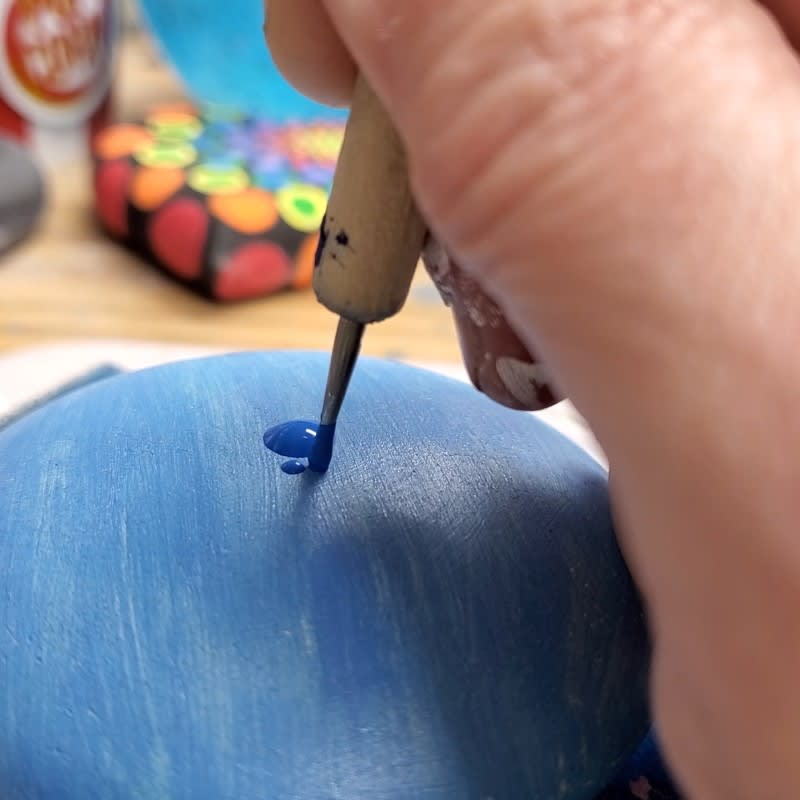
Types of dotting tools
Dotting tools can be regular paint brushes, tools made specifically for dot painting, or you can use household items that are modified to use for dot painting. Some of the most common handmade dotting tools are cotton swabs, unused pencil erasers, and toothpicks.
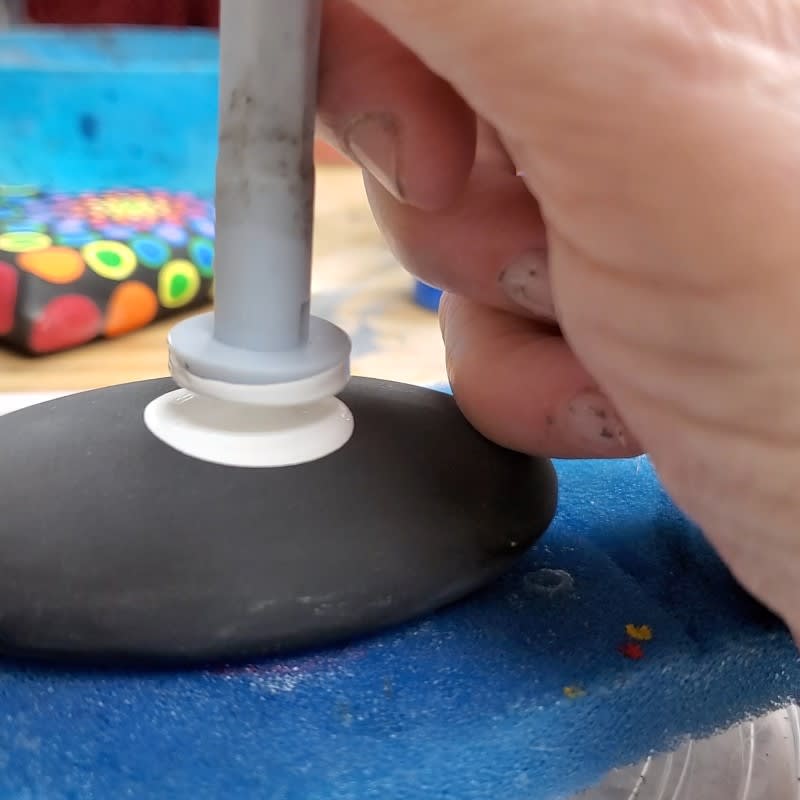
A pointy Q-tip is a great buy when thinking about the types of tools to get. This is precise and soft tool for making finer dots.
How Do You Use a Dotting Tool?
No matter which dotting tool you use to dot paint, the technique is the same. Dip the dotting tool into the paint and use the drop of paint that is picked up to make a circle, or dot, on your mandala piece.
Dotting techniques you can try
Some techniques include using different shades or color blending. These can help set a rock apart from a general design and really add a pop in the details!
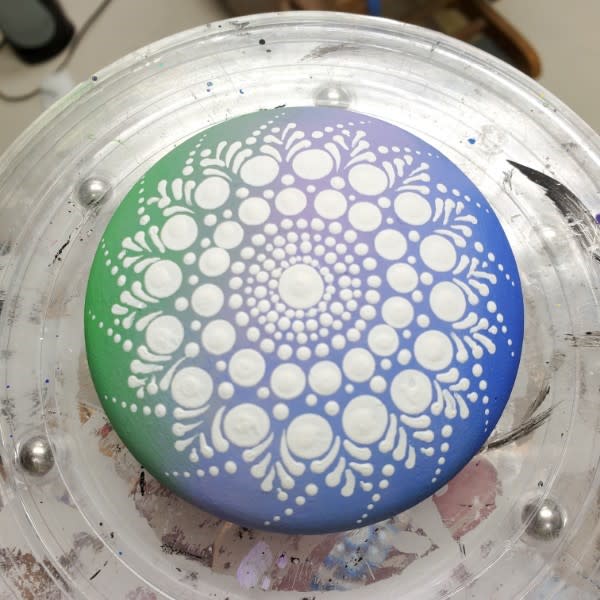
Also, you can try to use different types of paints like pearl paint or different product brands. A purchase of a higher quality paint will make the difference between a faded or vibrant dot once it dries.
Keep in mind that there are different categories of paints. For example, you can find heavy or soft body acrylic paint products.
Take a look at this mandala painting video (below) to see it in action
Is it hard to use dotting tools?
The quick is answer is no, it isn’t hard to use them. Beginners can easily learn the process and how-to; but the longer you practice, the more precise the stone art will be.
What is Mandala Stone Dot Painting?
Mandala Stone Dot Painting is the basic dot painting, but used specifically on stones. People who enjoy painting rocks use both natural stones and handmade rocks made from cement, plaster, and/or concrete.
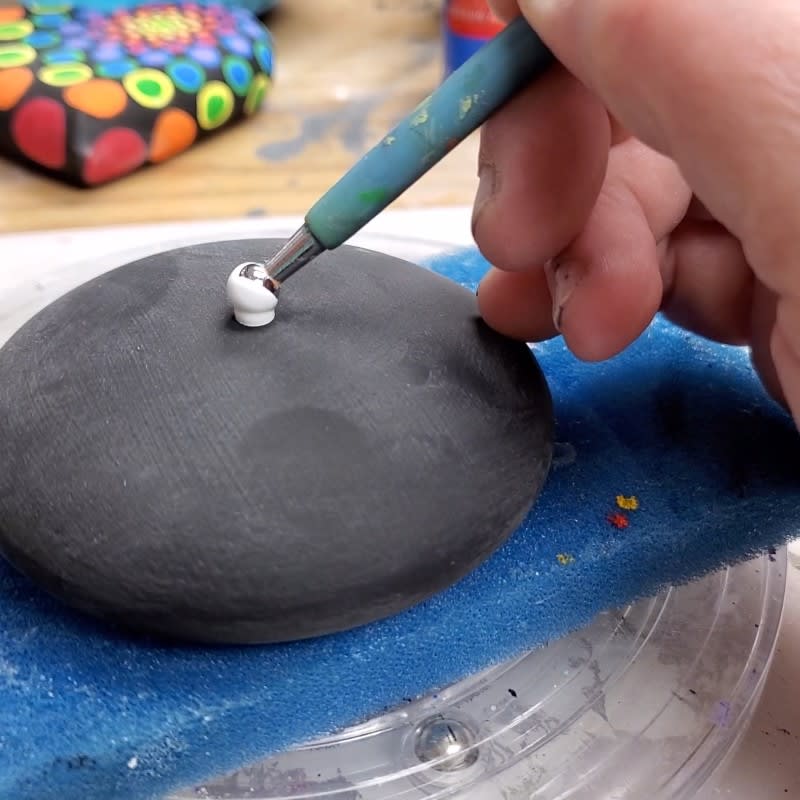
Oftentimes, mandala stone painting is used as an art therapy to help overworked minds or treat depression, stress, or anxiety.
Process of Mandala dot painting
The process of dot painting is a pretty easy one in theory; simply dip the dotting tool into the paint and use it to make a dot on your piece. The technique becomes more precise as you learn to make different dot sizes and shapes from the drop of paint.
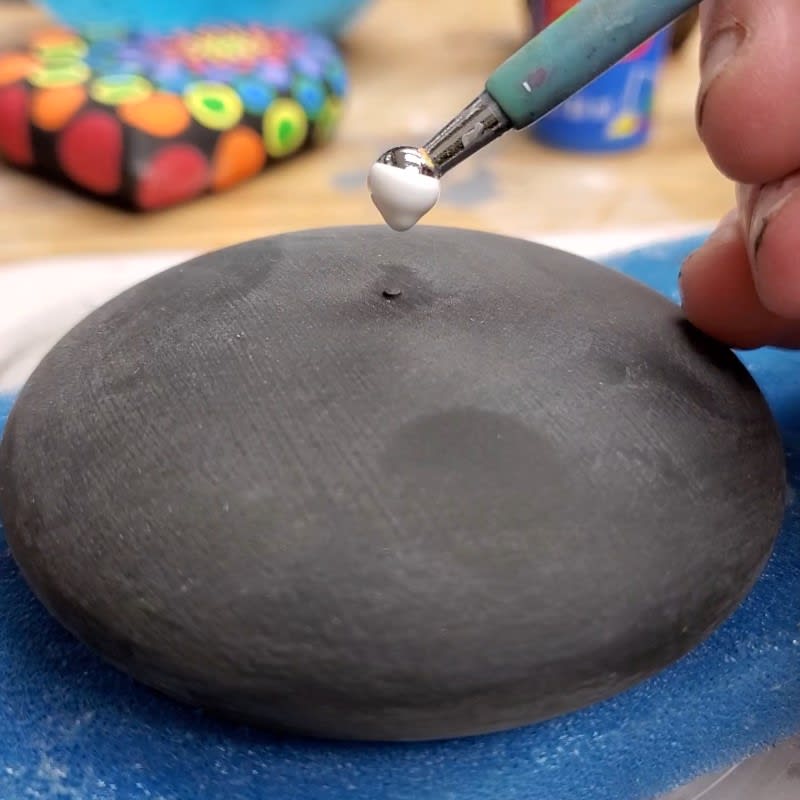
Although the process seems easy, different factors with affect the final outcome. Things like the amount of paint you use, the type of tool, and how patient you are with the piece.
Typical mandala dotting design
Mandalas usually start with one dot in the middle, surrounded by a circle of small dots. From there, the dots increase in size as each new line gets closer to the outside of the stone.
Once the initial layer has dried, different sizes and colored dots can be layered multiple times to add detail and depth to your mandala.
How Do You Draw a Mandala Dot?
Although the technique is basically the same, the way you apply your dot may vary depending on which tool you’re using. Once you get comfortable with the consistency of your paint, you can experiment with different tools to see how your dots will lay.
Using a round ball
If you’re using a round ball, you can hold it upright or sideways and get the same result; but if you’re using a flat tool, you’ll need to hold it straight up and down to get the full dot.
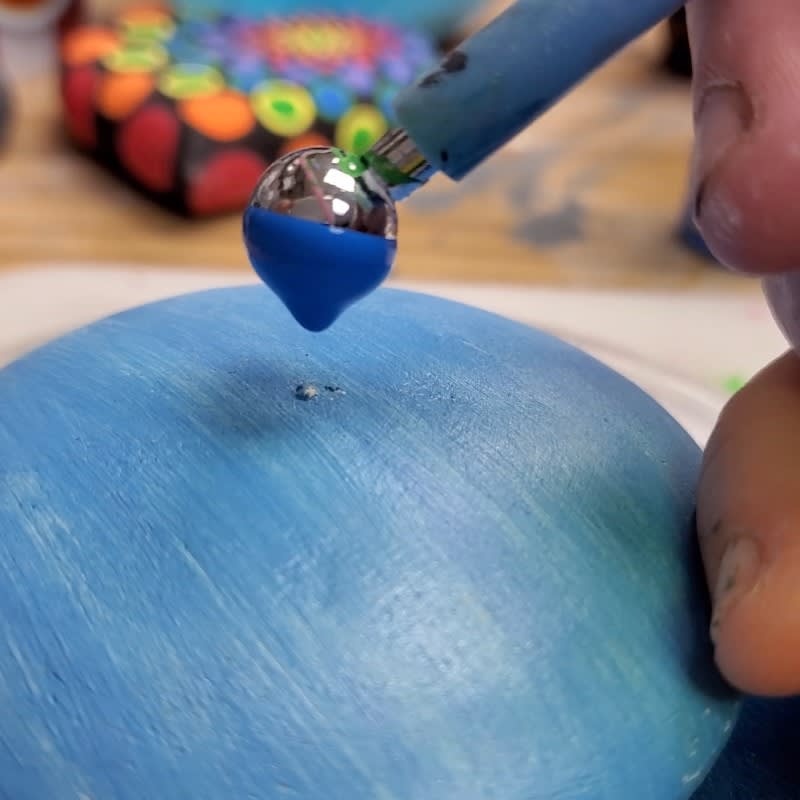
Sometimes you’re just touching the paint to the surface and letting the drop spread out by itself, but other times you’ll use less paint and push the tool onto the piece.

Try different dotting tool techniques
The more you practice with different paints, techniques, items, and tools, the easier it will be to know which tool will produce the dot you’re looking for.

